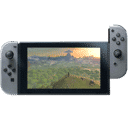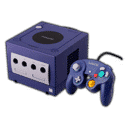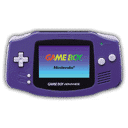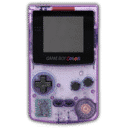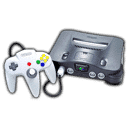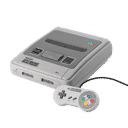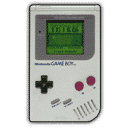
Summary:
Nintendo has set a new baseline: going forward, the company’s primary development will target Nintendo Switch 2, and it will expand its business around this platform. That single move clarifies a lot. New first-party releases will increasingly land as Switch 2 exclusives once the remaining, previously announced titles for the original Switch ship. The original console won’t vanish overnight—Nintendo will keep selling hardware for a while and some support continues—but the center of gravity has moved. For players, this shift means clearer expectations: stronger visuals and frame rates on Switch 2, fewer new releases aimed at the older hardware, and a roadmap designed around a growing install base. Backward compatibility mitigates risk for your library and accessories where supported, while third-party publishers rally behind a machine that’s easier to target with modern tools. If you’re deciding whether to upgrade, think timeline and taste: what you play, where you play, and how much you value smoother performance. Below, we unpack the decision, translate investor-speak into real-world implications, and turn it into practical advice you can act on today.
The decision that sets the tone for the Switch 2 era
Nintendo’s confirmation that future development will primarily target Switch 2 sets a clean direction for the next few years. In practical terms, the studios inside and around Nintendo will now plan, prototype, and ship with Switch 2 as the default. That gives teams freedom to design around higher performance targets, faster storage, and updated system features without carving out large compromises for older hardware. For players, this is the moment the new platform becomes the standard rather than the exception. You’ll still see marketing beats for late-cycle Switch titles, and you may spot a few cross-gen appearances that were locked in long ago. But the overall arc is simple: Switch 2 is the goalpost, and future first-party ideas will be scoped to fit it. That clarity also helps third-party developers allocate budgets and slot release windows—nobody wants to guess which way the wind is blowing when greenlighting a project.
Why Nintendo is moving now instead of later
Transitions happen when the business case and the creative case finally agree. On the business side, Switch 2’s early momentum gives Nintendo a strong foundation to build on. An expanding install base and renewed hardware buzz boost software attachment, DLC uptake, and peripheral sales. On the creative side, designers and technical directors prefer designing forward—once a new baseline exists, teams can push visual density, simulation complexity, and loading behavior without fighting against older constraints. Waiting too long risks fragmentation: developers split attention, QA multiplies, and the overall portfolio loses punch. Moving now concentrates energy where it matters, while still leaving room for the original Switch to close out gracefully with planned releases and evergreen sellers that continue to attract families and new players.
Signals that the timing is right
Look at the cadence: investor materials shift tone, partner studios start announcing Switch 2-targeted projects, and retail planning pivots toward new-gen shelf space. Even evergreen franchises—racing, platformers, and party favorites—benefit from the horsepower bump, leading to cleaner frame pacing and richer presentation. The result is a rising tide that makes every release feel fresher, encouraging players to upgrade without forcing them.
What “primary development focus” really means for new releases
“Primary” is the operative word. It doesn’t mean the original Switch disappears; it means the creative and technical baseline for new projects is Switch 2. For first-party, expect a steady tilt toward exclusives. For projects already in the pipe, you might see dual releases if development was too far along to unwind. Over time, the outliers fade, and the library skews decisively new-gen. Tooling follows the same path: internal engines and middleware profiles will favor Switch 2, which reduces overhead and lets teams spend more time on level design, enemy AI, and systems tuning rather than cross-gen workarounds.
How this impacts franchise roadmaps
Series with big scope—open-world adventures, sim-heavy sandboxes, and multiplayer-first titles—gain the most. They can aim for higher resolution and steadier frame rates, but the real win is headroom for denser encounters, smarter NPCs, and quicker traversal. Smaller projects benefit too: art direction can stretch, loading can get out of the way, and UX can be tuned around faster I/O. The knock-on effect is pacing. Fewer loading walls and better streaming let designers shape levels with rhythm in mind, not technical limits.
How long the original Switch still matters for players
The original Switch doesn’t turn into a pumpkin. Nintendo historically keeps selling legacy hardware while it still meets real-world needs: family budgets, secondary consoles in a household, or a handheld-first lifestyle. Popular evergreens—think kart racers, social platformers, and life sims—don’t suddenly stop being fun just because a new box exists. Expect maintenance updates where appropriate and sales that keep those libraries accessible. For households deciding between “buy a brand-new Switch” and “step up to Switch 2,” the calculus will hinge on favorite series and how sensitive players are to performance. If your nightly routine is cozy games at 720p handheld, the urgency is lower. If you love action games or open-world exploration on a big TV, you’ll feel the upgrade immediately.
The late-cycle sweet spot
There’s always a window where the original platform delivers superb value: discounted hardware bundles, complete editions, and mature libraries with tons to play. For parents buying a first system for younger kids or for travelers who want a cheaper device to toss in a bag, that sweet spot can be ideal—especially with family favorites that already run great on the original machine.
Backward compatibility and why your library still counts
One reason the transition lands softly is library continuity. Backward compatibility means many of your purchases carry forward, and accessories can have extended life where supported. That reduces friction and keeps communities intact. It also changes buying behavior: players are more willing to grab late-cycle hits if they know the games will travel with them. For Nintendo, that stability smooths the switch from one revenue curve to the next and helps ensure the eShop remains lively on day one of major Switch 2 drops.
Quality-of-life wins you’ll actually feel
Even without patches, some backward-compatible games benefit from stronger hardware headroom—faster loads and more stable performance in busy scenes. When developers add optional updates, expect better image quality modes, refined motion controls, and cleaner UI scaling. None of that replaces true next-gen exclusives, but it makes your existing library feel fresher while you wait for the next big thing.
First-party cadence: what to expect from Nintendo’s roadmap
Nintendo’s internal teams typically mix tent-poles with inventive mid-sized projects. With Switch 2 as the north star, you can anticipate a pattern: one or two large, system-defining releases across a 12-month cycle, interleaved with polished experiments and expansions that broaden the catalog. This cadence maximizes momentum—big titles pull players in, while smaller, imaginative projects keep the store lively between blockbusters. Because Switch 2 engineering becomes the default, these projects can share tech wins—input systems, streaming solutions, and rendering upgrades—so each launch benefits from the last.
How cross-gen stragglers fit in
If a major series was greenlit for the original Switch years ago, you might still see a dual release. Those will be exceptions, not policy. Over time, the slate consolidates around Switch 2, simplifying marketing and avoiding player confusion about where a series “really lives.” That clarity matters for multiplayer communities and DLC plans too.
Third-party momentum and developer confidence
Publishers watch signals: official statements, hardware sales trends, and the pace of first-party releases. A clear focus on Switch 2 tells partners to target the new platform outright. Modern engines and asset pipelines are already aligned with current-gen consoles and PC, so bringing those builds to Switch 2 becomes more straightforward than splitting efforts across widely divergent targets. Expect more day-and-date launches, better parity on features, and a healthier spread of genres—from indie darlings to big technical showcases—arriving without long delays.
What this unlocks for multiplayer and live games
Higher baseline performance helps netcode and matchmaking by stabilizing frame times and easing CPU bottlenecks. That stability makes ranked modes smoother, makes spectator tools more reliable, and lets seasonal events ship without gutting performance on older hardware. The net effect: more reasons to stick around and more confidence to invest in cosmetics or battle passes when the experience feels good session after session.
Hardware sales, software legs, and the business math of a pivot
On paper, a platform shift always looks risky; in practice, it’s a carefully staged handoff. Hardware momentum for Switch 2 creates a larger audience for every new release. Meanwhile, the original Switch keeps selling to value-seekers and families who want dependable favorites. Nintendo benefits from both ends: a growing next-gen base hungry for showcases and a massive legacy base that keeps evergreen software moving. As the ratio tilts, marketing spend concentrates on Switch 2, and the ROI on each blockbuster improves thanks to a focused audience that expects modern production values.
Why profitability looks different early in a cycle
Early hardware phases can carry slimmer margins compared to mature years on older devices, simply because the mix shifts toward consoles and launch-window investments. As the software slate fills in and adoption grows, margin profiles normalize. That’s why setting development focus early matters: it pulls forward the moment when big attach rates and DLC ecosystems kick in, smoothing out the financial curve.
Acquisitions, partnerships, and building capacity the Nintendo way
Nintendo grows carefully. Instead of chasing splashy publisher mergers, it tends to bring trusted partners closer or expand facilities that supercharge internal teams. That approach fits the Switch 2 push: more hands building within familiar processes, shared tech stacks, and a culture tuned to polish. Expect studio additions that already understand Nintendo’s toolchains and feedback loops, along with facility expansions that add space for larger teams and test labs. The point isn’t empire-building—it’s reliable delivery of games that feel unmistakably Nintendo while keeping schedules sustainable.
Expect tighter integration with specialty studios for art, porting, and online services. By aligning on Switch 2 from the start, these partners can plan capacity, train staff on specific pipelines, and hit dates with fewer surprises. That alignment shortens bug cycles and helps ensure launch versions feel robust on day one.
What this means if you’re upgrading—or waiting
If you want the cleanest experience on upcoming first-party releases, Switch 2 is the play. You’ll benefit from stronger performance targets, improved load times, and features designed around the new hardware. If your budget is tight or your playlist leans toward classics, you can safely wait: the original Switch still offers a gigantic library and friendly pricing on bundles. A middle path works too—grab Switch 2 now for shared household play and keep an older unit as a travel or kid-friendly device. Because libraries carry forward where supported, juggling two devices is easier than it used to be.
Accessories, storage, and the practical setup
As you plan, consider expanded storage early—modern games prefer faster I/O and bigger footprints. If you swap between docked and handheld, think ergonomics: grips, stands, and docks that match your routine. A tidy setup turns “I’ll play for ten minutes” into “I played for an hour” because friction disappears.
Regional pricing, editions, and the collector angle
New-gen cycles bring special editions, steelbooks, and soundtracks—fun, but easy to overdo. Pick franchises you love and editions that add lasting value: art books you’ll revisit, full-game physical releases you can loan, or soundtrack pressings you’ll actually spin. If you’re mixing regions, watch for rating-board logos, language options, and any region-specific download requirements that might affect resale or gifting. The simplest policy: buy what you’ll enjoy using, not just displaying.
Digital, physical, or both?
Digital excels for live games and daily play, while physical scratches the archival itch. Mixing the two lets you keep favorite staples installed and reserve shelf space for evergreen single-player adventures. With backward compatibility in the mix, those choices carry further than one hardware generation, so it’s worth thinking long-term.
Online services, saves, and cross-progress where it’s supported
Expect Switch 2 to lean on familiar account systems. That continuity helps cloud saves, subscription perks, and access to classic libraries where included. For games that support cross-progress, confirm the in-game account linkage before migrating; locking that in early avoids headaches later. If you play handheld on the go and docked at home, set up automatic updates overnight to keep session time focused on actual play rather than patching.
Households juggling multiple profiles should map who plays what and where. Parental controls are worth an evening to configure: screen-time windows, spending limits, and age ratings. It’s easier to set guardrails once than to referee every download.
Common myths about transitions—cleared up
“My old Switch is useless now.” Not true. The library is massive, prices are friendly, and it remains a great entry device. “Every new game will still release on both.” Also not true. Dual releases taper as the slate moves to Switch 2. “Backward compatibility means free upgrades.” Sometimes, but not guaranteed; it depends on each developer. “Third-party ports will always lag.” With a clear focus and modern pipelines, parity improves—especially for late-cycle titles designed with Switch 2 in mind.
Why clarity helps everyone
When a platform holder says out loud where development is headed, it saves players money and saves studios time. You can plan purchases with confidence; developers can target performance and feature sets without hedging. That’s the real win behind the headline.
Practical buying advice for the next 6–18 months
If you’re eyeing a holiday upgrade, prioritize bundles that include a game you’ll actually play. Avoid paying a premium for extras you’ll never use. If you’re waiting until a must-have exclusive arrives, set aside budget for a larger microSD and a second controller—those two quality-of-life pieces have an outsized impact on how smooth the first week feels. For the original Switch, this is the prime time to scoop up classics you missed at great prices; they’ll carry forward where supported and make your eventual Switch 2 feel like it launched with a library tailor-made for you.
Steer clear of vague third-party “performance” accessories without reputable reviews. For physical editions, look for “all on card” confirmations if that matters to you. For digital, confirm storage requirements before purchasing so you’re not juggling deletes on day one.
How to plan your gaming around the Switch 2 era
The takeaway is simple: Nintendo has set Switch 2 as the creative and commercial baseline. The original Switch remains a friendly on-ramp with an incredible library, but the future is firmly pointed at the newer machine. If you value performance, jump in now and enjoy the upgrades as they roll out. If you’re budget-minded, keep playing what you love and upgrade when your favorite series plants its flag on Switch 2. Either way, clarity is on your side—you can chart a path that fits your taste, your time, and your wallet.
Conclusion
Nintendo’s pivot locks the next chapter into place: studios build for Switch 2 first, the original Switch finishes strong on the back of its timeless hits, and third-party partners align to deliver cleaner, timelier games. With backward compatibility smoothing the handoff and clear messaging about exclusivity going forward, you can plan purchases instead of guessing. Upgrade when the games you care about arrive, keep your existing favorites in rotation, and enjoy a transition designed to feel like momentum—not whiplash.
FAQs
- Will Nintendo still release games on the original Switch?
- A few previously announced titles will land there, but new projects will increasingly target Switch 2 as exclusives once those commitments ship.
- Is my existing library safe on Switch 2?
- Backward compatibility covers many titles and accessories where supported. Check each game’s product page for specific features and any optional enhancements.
- Should I upgrade now or wait?
- If you value higher performance and want first-party showcases as they arrive, upgrade now. If you’re satisfied with your current routine or watching your budget, you can wait for a must-have exclusive or a compelling bundle.
- Will third-party releases arrive day-and-date?
- Expect improved parity as developers target Switch 2 directly, with modern pipelines making simultaneous launches more feasible.
- What happens to online services and saves?
- Your account continuity helps preserve purchases and, where supported, cloud saves. Link in-game accounts early for titles that offer cross-progress.
Sources
- Six Months Financial Results Briefing / Message from the President (Official PDF), Nintendo, November 5, 2025
- Nintendo hikes Switch 2 forecast to 19 million units, Reuters, November 4, 2025
- Nintendo is shifting its primary development focus to Nintendo Switch 2, GamesRadar+, November 6, 2025
- Nintendo is getting the Switch ready for retirement, The Verge, November 6, 2025
- “Primary development focus” has shifted to Switch 2, according to Nintendo, KitGuru, November 6, 2025
- Nintendo to strengthen game development by acquiring development companies, VGChartz, November 6, 2025
- Nintendo says going forward it will shift primary development focus to Nintendo Switch 2, MyNintendoNews, November 5, 2025


